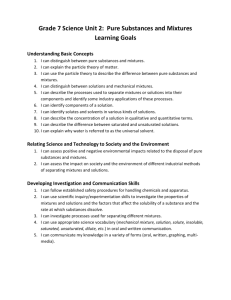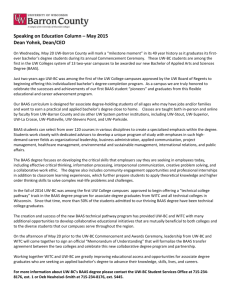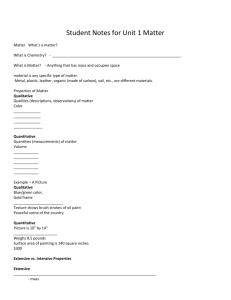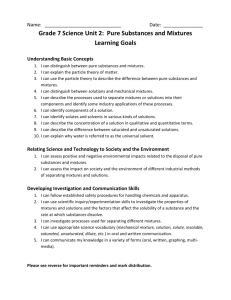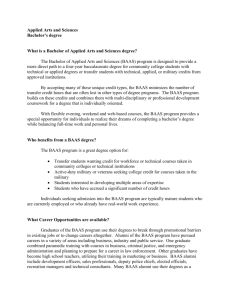Tool box form DEBJB
advertisement
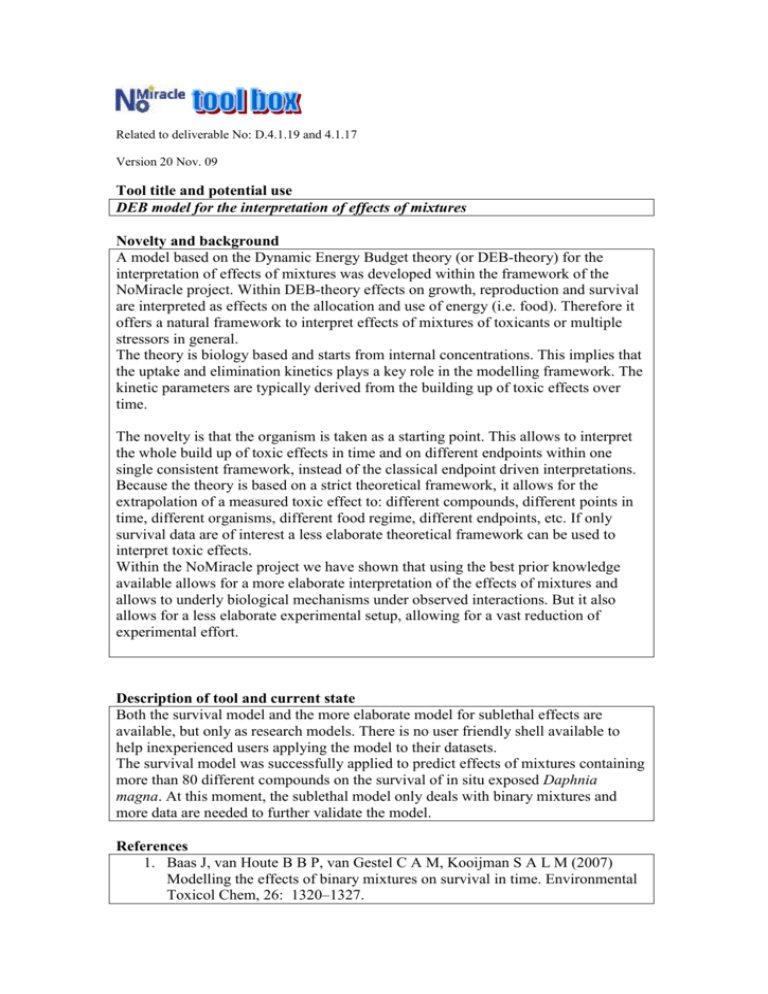
Related to deliverable No: D.4.1.19 and 4.1.17 Version 20 Nov. 09 Tool title and potential use DEB model for the interpretation of effects of mixtures Novelty and background A model based on the Dynamic Energy Budget theory (or DEB-theory) for the interpretation of effects of mixtures was developed within the framework of the NoMiracle project. Within DEB-theory effects on growth, reproduction and survival are interpreted as effects on the allocation and use of energy (i.e. food). Therefore it offers a natural framework to interpret effects of mixtures of toxicants or multiple stressors in general. The theory is biology based and starts from internal concentrations. This implies that the uptake and elimination kinetics plays a key role in the modelling framework. The kinetic parameters are typically derived from the building up of toxic effects over time. The novelty is that the organism is taken as a starting point. This allows to interpret the whole build up of toxic effects in time and on different endpoints within one single consistent framework, instead of the classical endpoint driven interpretations. Because the theory is based on a strict theoretical framework, it allows for the extrapolation of a measured toxic effect to: different compounds, different points in time, different organisms, different food regime, different endpoints, etc. If only survival data are of interest a less elaborate theoretical framework can be used to interpret toxic effects. Within the NoMiracle project we have shown that using the best prior knowledge available allows for a more elaborate interpretation of the effects of mixtures and allows to underly biological mechanisms under observed interactions. But it also allows for a less elaborate experimental setup, allowing for a vast reduction of experimental effort. Description of tool and current state Both the survival model and the more elaborate model for sublethal effects are available, but only as research models. There is no user friendly shell available to help inexperienced users applying the model to their datasets. The survival model was successfully applied to predict effects of mixtures containing more than 80 different compounds on the survival of in situ exposed Daphnia magna. At this moment, the sublethal model only deals with binary mixtures and more data are needed to further validate the model. References 1. Baas J, van Houte B B P, van Gestel C A M, Kooijman S A L M (2007) Modelling the effects of binary mixtures on survival in time. Environmental Toxicol Chem, 26: 1320–1327. 2. Baas J, Jager T, Kooijman S A L M (2009) Estimation of no effect concentrations from exposure experiments when values scatter among individuals. Ecotoxicological Modelling, 220: 411–418. 3. Baas J, Jager T, Kooijman S A L M (2009) A model to analyze effects of complex mixtures on survival. Ecotoxico Eviron Safety, 72: 669–676. 4. Baas J, Willems J, Jager T, Kraak M, Vandenbrouck T, Kooijman S A L M (2009) Prediction of survival after in situ exposure to complex mixtures. Environ Sci Technol, DOI 10.1021/es901083v 5. Baas J, Stefanowicz A M, Klimek B, Laskowski R, Kooijman S A L M. /in press) Model-based experimental design for assessing effects of mixtures of chemicals.Environ Pollu, accepted for publication 24/07/2009. 6. Kooijman S A L M, Baas J, Bontje D, Broerse M, Jager T, v. Gestel C A M, v. Hattum B (2007) Scaling relationships based on partition coefficients and body sizes have similarities and interactions. SAR QSAR Environ Res, 18: 315–330. 7. Jager T, Vandenbrouck T, Baas J, d. Coen W M, Kooijman S A L M (2009) A biology-based approach for mixture toxicity of multiple endpoints over the life cycle.Ecotoxicology, to appear. Responsible scientists: Jan Baas, Environ, jbaas@environcorp.com Tjalling Jager, VU Theoretical Biology, Tjalling.jager@falw.vu.nl Bas Kooijman, VU Theoretical Biology, Bas@bio.vu.nl



